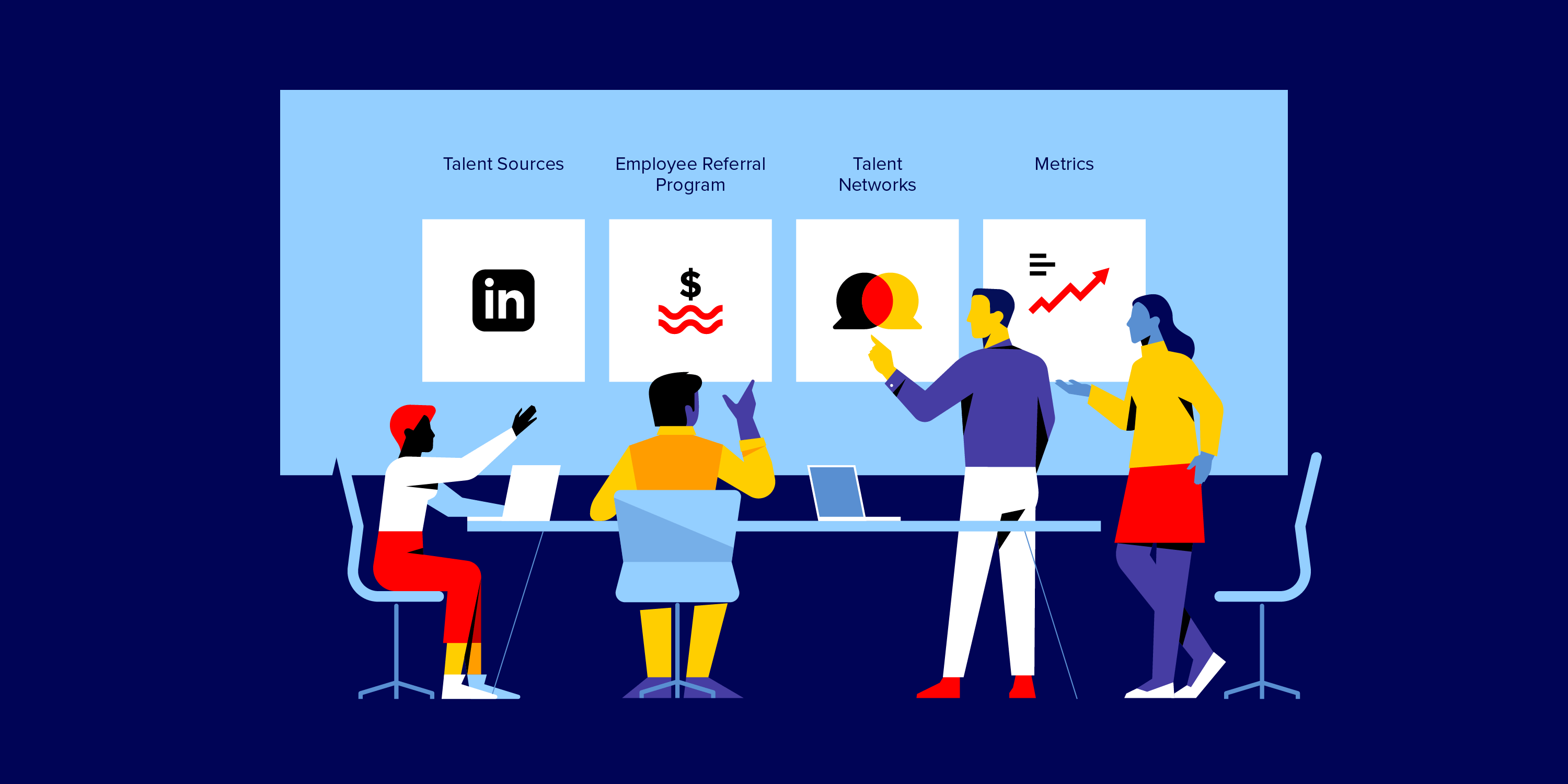How Zillow’s Recruiting Team Improved Candidate Experience

Lisa Fraser is a workplace inclusion expert who has advised Fortune 500 companies on their diversity and equity strategies. She has been featured in Black Enterprise, Working Mother, and other notable publications.
Attracting and retaining top talent starts with a smooth recruiting process. Here, experts share their secrets for keeping your candidates happy from beginning to end.
In recruiting, first impressions mean a lot. Not just the impression a candidate makes on you, but also the one you make on them. A 2019 PwC survey of 10,000 candidates working in technology and other in-demand industries found that almost half have turned down an offer due to a bad hiring-process experience.
Poor candidate experiences also impact how job seekers view organizations in general, making them less likely to engage with or recommend the company to others in their field, according to a recent survey of 6,500 candidates by scheduling software company Cronofy.
Candidate experience is quickly becoming a cornerstone of the recruitment process. In fact, Modern Hire’s third annual hiring trends report notes that improving candidate experience is one of the most influential trends in the recruiting industry today.
“Candidates are evaluating every company they engage with, and first impressions matter,” says Ginny Cheng, Director of Recruiting at Zillow Group, parent company of the most visited real estate website in the US and one of Fortune’s 2021 Best Companies to Work For. “They may see their experience with us as a reflection of how we’ll care about them as an employee. A strong candidate experience starts that relationship off on the right foot, and makes a new hire more likely to recommend people in their network.” Candidate experience is so key that Cheng and her team are currently implementing reimagined application, recruiting, and onboarding processes at Zillow.
A strong recruitment strategy that prioritizes the candidate experience allows employers to attract more high-quality talent ahead of competitors, improve quality of hires, reduce the time to hire, and enhance brand awareness and brand experience. Here are three ways to build one.
Streamline Interview Scheduling
Delays, inefficient communication, and rescheduling are well-known pain points for candidates in the recruiting process. But what you might not know is just how much they can cost you: The aforementioned Cronofy survey found that nearly half of the candidates surveyed either dropped out or disengaged from the hiring process due to interview scheduling frustrations. Leadership candidates have even less patience for messiness: Of senior-level candidates surveyed, 62% said they had bowed out of a hiring process over scheduling issues.
Cheng emphasizes the importance of a clean scheduling process with her team at Zillow. They take pains to avoid rescheduling candidate interviews, in part, by planning for time out of the office as far in advance as possible. “We say to the recruiting team, ‘We know the holidays are upcoming, we know the summer season is coming, we know you might have plans that will prevent you from doing some of the interviews, so think about who your coverage is and make sure your calendar is up to date,’” says Cheng. “It makes it easier for our recruiting coordinators to be able to see a transparent calendar and helps with scheduling.”
If your team isn’t already using automated calendar tools to help recruiters and candidates schedule calls quickly and efficiently, look into them. GoodTime and similar scheduling software programs provide real-time availability for appointment scheduling and help cut down on back-and-forth and misunderstandings between recruiters and candidates.

Map Out Candidate Communications
One of the biggest complaints candidates have about communication during the hiring process is widely known as “ghosting”—either never hearing back from a company after applying for a job, or recruiters taking too long to reconnect post-interview.
If, post-interview, everything goes dark, candidates are left not only with questions but also with a negative experience, which can end up hurting a company’s employer brand. Robust candidate communication, on the other hand, ensures a positive candidate experience and improves their perception of a company. That’s why Craig Fisher, a noted recruitment expert who has consulted for Toyota, LinkedIn, and HootSuite, recommends that recruiting teams create a map that delineates each point of communication. “You get to see: They apply here, a recruiter reaches out here, an interview is scheduled here … and you start to see that picture,” says Fisher, who, after leading talent acquisition teams at Fortune 500 companies, founded the brand and recruitment strategy firm TalentNet Media.
There are two key moments in the process where communications can break down that you should be sure to include in your map:
When a candidate’s application is put in the “no” pile
Recent studies by Aptitude Research found that 61% of applicants who had applied for a job more than two months ago still hadn’t heard back from the company. The research also found that more than half of applicants who were ultimately screened out after applying for a job never received a response.
“If candidates are sending emails because weeks have gone by with no communication, that’s a problem whether they’re a fit for the job or not; they’re still a fan of your brand up until the point that they’re not,” says Fisher.
Yet, this radio silence during the application process is an extremely common experience. When Fisher did an audit for one recent client, he realized that 80% of job applications weren’t even seen, let alone responded to. “So we decided to add recruitment coordinators on this team to look at every application and place them in a yes, no, or maybe file,” he says. “If they were a definite no, meaning they weren’t going to get contacted by a recruiter or a hiring manager at all, the person on this team would send them a personal email saying, ‘Hey, we’re sorry, you’re not a fit for this job; please join our talent community and keep us up to date because we’d like to keep interacting with you in case there’s a job in the future or you advance in what you’re doing enough for a job like this.’”
This strategy was extremely well received by candidates. “People emailed or called me saying, ‘Hey, I just got rejected by your company and it was a great experience. I’ve been applying there for years and getting nothing.’”
If your company doesn’t have the resources that allow recruiters to personally respond to every applicant, automation can help. Many applicant tracking systems, such as Lever, iCIMS, and Greenhouse, enable recruiters to quickly send a prewritten automated email to rejected candidates.
After a candidate interviews with a manager
“If you interview candidates and obtain candidate survey data, you’ll see that their high points are when a recruiter reaches out and their highest point is when they get an interview with a manager,” says Fisher. “One of their lowest points is the time after they interview with the manager.” That’s because there’s often a gap in communication at that point. The hiring manager is often still interviewing other candidates and may not have gotten back to the recruiter yet, notes Fisher.
“There should be a big star right on that spot in the journey map to reach out to a candidate and say, ‘Hey, I heard your interview went well. We’ll get you some feedback; hang in there. Meanwhile, here’s some great information about our company and more tips on the next best step,’” he says. The key to a better candidate experience is a more human approach, says Fisher. “Emphasize the need to make candidates feel important, needed, and wanted with your recruiters and hiring teams,” Fisher says. “Again, a big part of that is timely communication.”
Collect Feedback From Candidates
“In a competitive job market, companies win when they stand out during the application and interview process,” says Cheng. “Candidates with multiple options are more likely to choose a company that made a strong positive impression on them.” In an effort to understand and improve candidate experience in an increasingly remote world, Zillow surveyed recently hired employees, candidates who did not receive offers, and people involved in various touch points of Zillow’s hiring process, including hiring managers, recruiters, sourcers, and recruiting coordinators.
The survey was comprehensive and focused on experience, people, systems, and processes, explains Cheng. “We asked, ‘What can we do better?’ We looked at the entire journey from potential applicant to candidate to employee onboarding—including how we think about the internal mobility experience when employees become candidates once again.”
The survey results allowed the Zillow recruiting team to focus on key opportunities for improvement. “After the research phase, a working group brainstormed dozens of ideas and narrowed them down to fewer than 15 that would improve our processes and the candidate experience. We prioritized the ideas that would have the most impact on the candidate journey,” says Cheng.
Although Cheng needed to keep most details about specific candidate feedback within the company, she did share a few changes Zillow made or is making as a result. For example, the company developed resource portals that serve as a one-stop shop for candidates to get the information they need to be better prepared for interviews, and for new hires to access materials such as onboarding checklists and expectations.
“We also saw an opportunity to grow stronger by offering more education to recruiters on key information we share with candidates, for example, our philosophy on compensation,” says Cheng. In addition, Zillow’s talent acquisition team is looking at new customer relationship management (CRM) systems “and other tools that will help scale our recruiters so they’re not just stuck in the weeds, that will enable them to create a connection with our candidates,” she says.
“Companies that don’t prioritize candidate experience during recruiting will miss out on top talent,” Cheng says. This understanding keeps her team working to refine their processes and make potential and new employees “feel excited, celebrated, valued, welcomed, and included,” she says. “Improving the candidate experience is an ongoing journey for us, as it should be for any company.”

Lisa Fraser is a workplace inclusion expert who has advised Fortune 500 companies on their diversity and equity strategies. She has been featured in Black Enterprise, Working Mother, and other notable publications.




